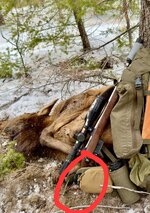Haha just wanting to understand what you saw that brought that conclusion.
“Speed” is a poor metric. A normal shooter shooting .25 second splits with a pistol is probably wildly and dangerously out of control, and they might as well be hitting the trigger with a sledgehammer. For a USPSA GM .25 second splits is slow enough that they are bored with it.
It’s “trigger control”- not “trigger press” or trigger “squeeze”.
“Smooth and constant pressure to the rear until the trigger breaks at 90°”, can be achieved in 10 seconds from start to finish, or in 0.1 seconds from start to finish. Obviously 0.1 second requires a completely different level of skill and control than 10 seconds.
The shot in the video was not a “command” fire. The trigger press was compressed to around 0.5 seconds from start to finish. From that position, a “command” fire on the trigger making it fire “now!” would show a general up and right movement of the reticle as the shot broke- that is not present.
Cool. This is what I was wanting to know. I imagine a command fire has its place and needs to be done at an extremely high level to be effective. But if proper control can be achieved at that level of speed, then I just need to keep practicing.


